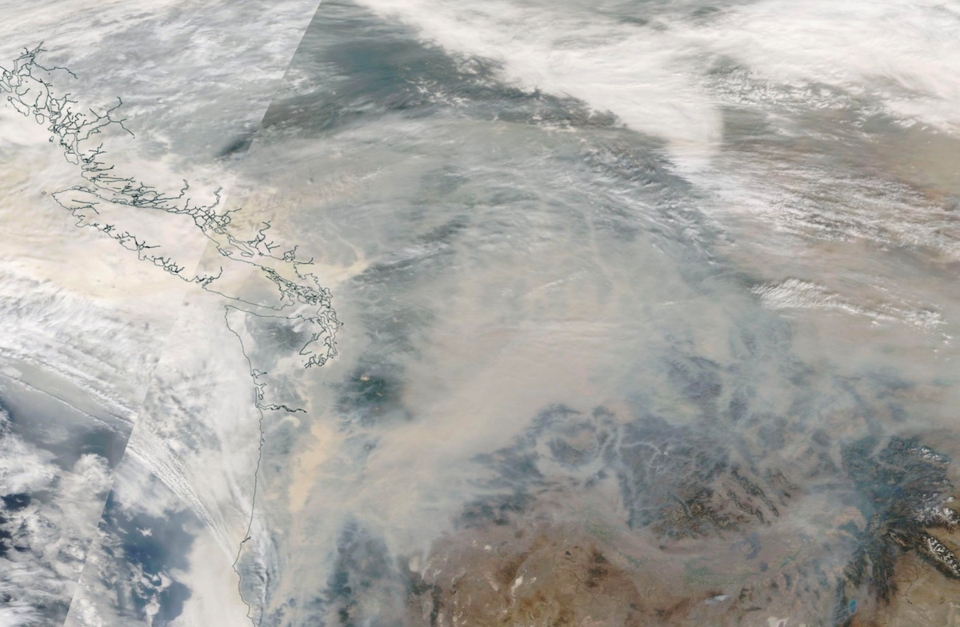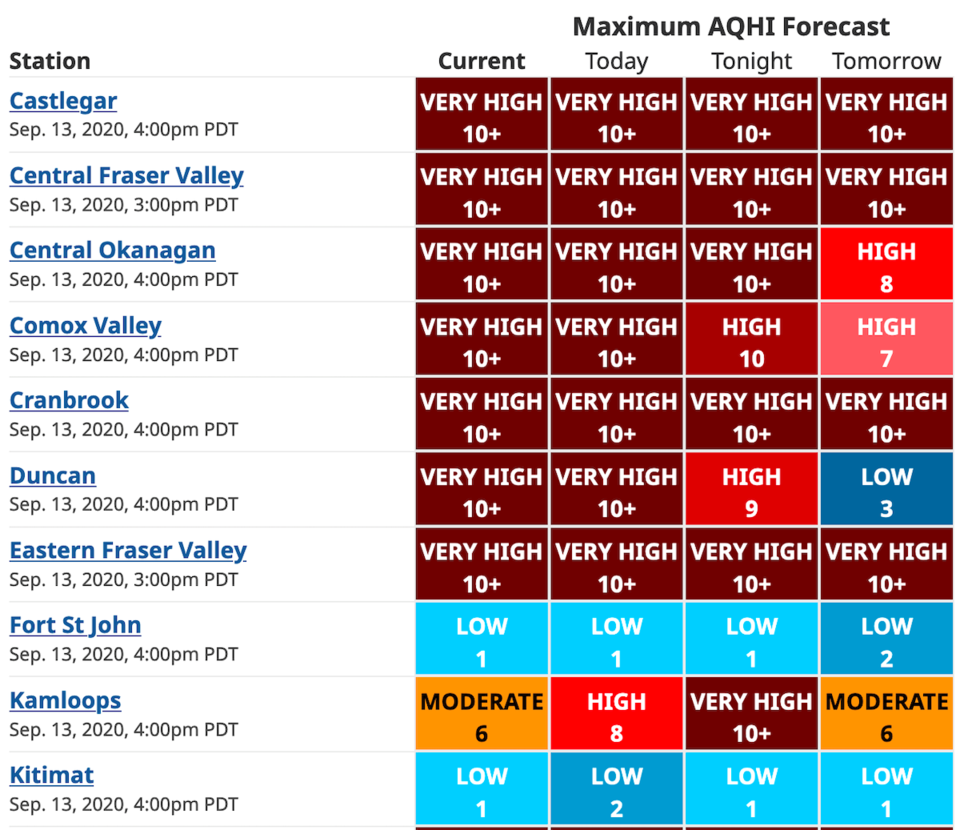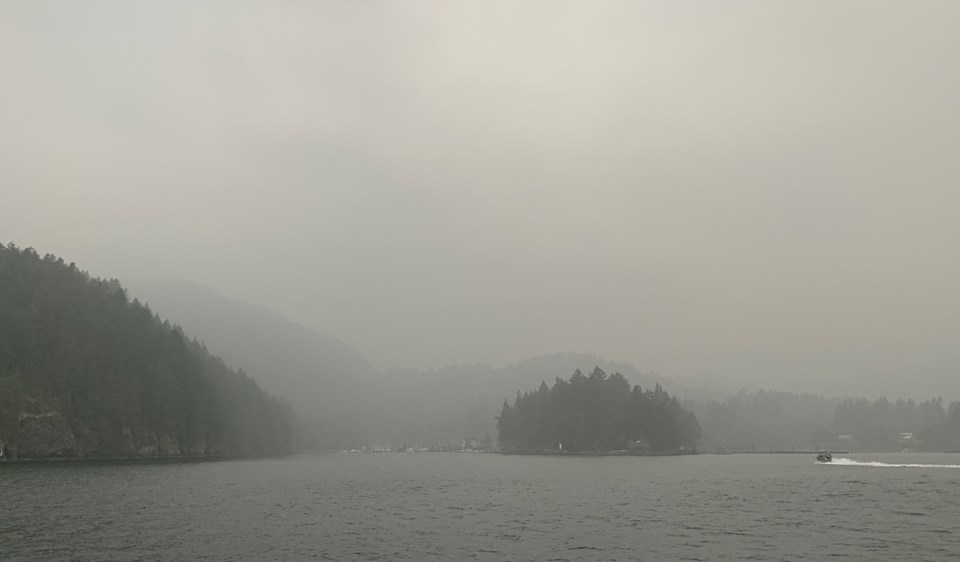The ferry ride from Horseshoe Bay to Bowen Island often makes you feel like you’re leaving one world and entering another.
On Sunday, however, the feeling on board the Queen of Capilano ferry was downright eerie.
“We got halfway across the Howe Sound and couldn’t see the island. The smoke was everywhere,” says Jenny Freeman on Sunday afternoon after returning home to the island from Whistler, which was also shrouded in smoke. “It got all quiet and eerie, especially when the ferry blasted its fog horn.”

The thick smoke causing burning eyes and sore throats throughout the Vancouver area has resulted in the city having the second-worst air quality in the world, according to Swiss-based IQAir. Only Portland, Oregon is worse, the website says.
If you think there's an escape from the heavy smoke shrouding the Lower Mainland, NASA's map shows you have to go a long, long way.
On Sept. 12, the photo of North America's Pacific coast shows smoke blanketing everywhere, reaching far into Alberta.
If you track back on the images, you can see how winds initially blew the smoke far out into the Pacific Ocean. Then, as winds changed earlier this week, the smoke from fires that continue to burn in Washington State, Oregon and California, came inland.
The B.C. air quality index measures how much particulate matter there is in the air. It shows that most of the province is experiencing “very high 10+” levels of particulate matter.
The only places in the province still enjoying healthy air quality include Fort St. John, Smithers and Kitimat. Prince George, which was low to moderate for most of Sunday, is expected to go to high on Monday.
Continued #AirQualityAdvisory for fine particulate matter (PM2.5) for #MetroVancouver and @FVRD1 due to wildfire smoke from outside the region. The dense smoke is forecast to begin clearing late this evening and into tomorrow. #AirQuality #WestCoastWildfires pic.twitter.com/nxEPu9RQPr
— Metro Vancouver (@MetroVancouver) September 13, 2020
Metro Vancouver’s air advisory continues: “Persons with chronic underlying medical conditions or acute infections such as COVID-19 should postpone or reduce outdoor physical activity until the advisory is lifted, especially if breathing feels uncomfortable. Exposure to PM2.5 is particularly a concern for people with underlying conditions such as lung disease, heart disease, chronic obstructive pulmonary disease (COPD), asthma, and/or diabetes, individuals with respiratory infections such as COVID-19, pregnant women and infants, children, and older adults. Individuals who are socially marginalized may also be at elevated risk.”
NASA is adding its voice to the warnings not to go outside when air quality is so bad.
“The smoke released by any type of fire (forest, brush, crop, structure, tires, waste or wood burning) is a mixture of particles and chemicals produced by incomplete burning of carbon-containing materials,” NASA says. “All smoke contains carbon monoxide, carbon dioxide and particulate matter (PM or soot). Smoke can contain many different chemicals, including aldehydes, acid gases, sulfur dioxide, nitrogen oxides, polycyclic aromatic hydrocarbons (PAHs), benzene, toluene, styrene, metals and dioxins. The type and amount of particles and chemicals in smoke varies depending on what is burning, how much oxygen is available, and the burn temperature.”

Some relief from the smoke is expected on Monday. However,” Metro Vancouver adds, “localized smoke concentrations may vary widely across the region as winds and temperatures change, and as wildfire behaviour changes.”
Martha Perkins is the North Shore News’ Indigenous and civic affairs reporter. This reporting beat is made possible by the Local Journalism Initiative.



